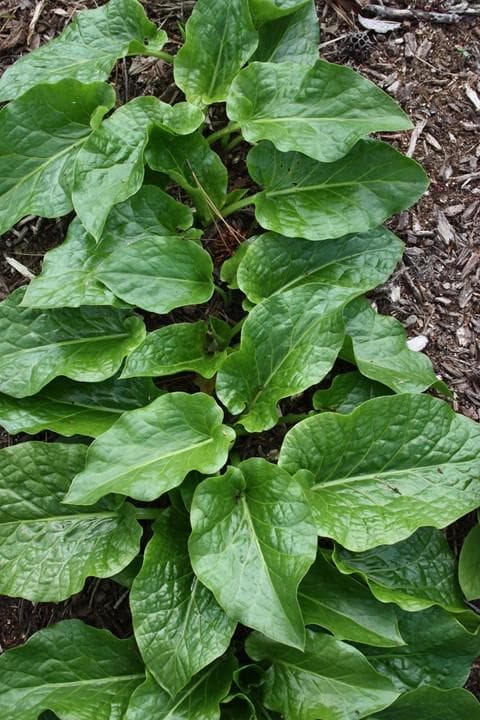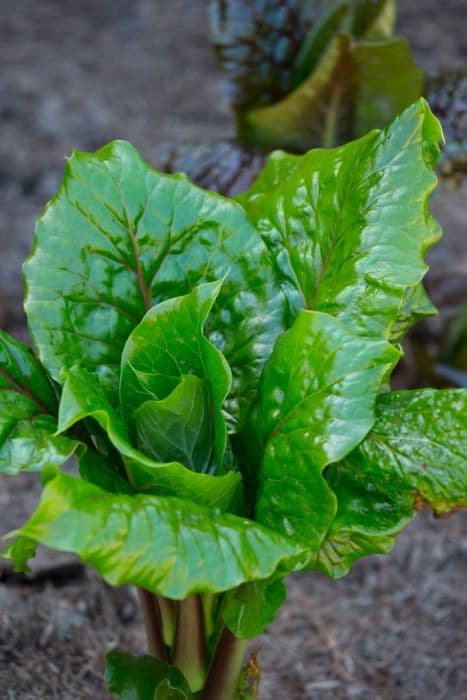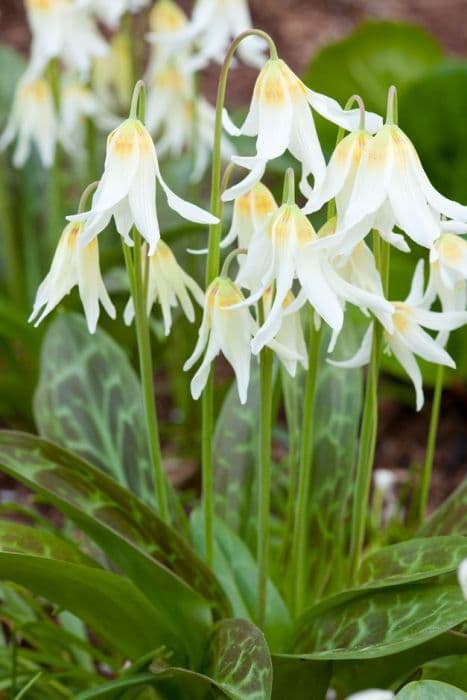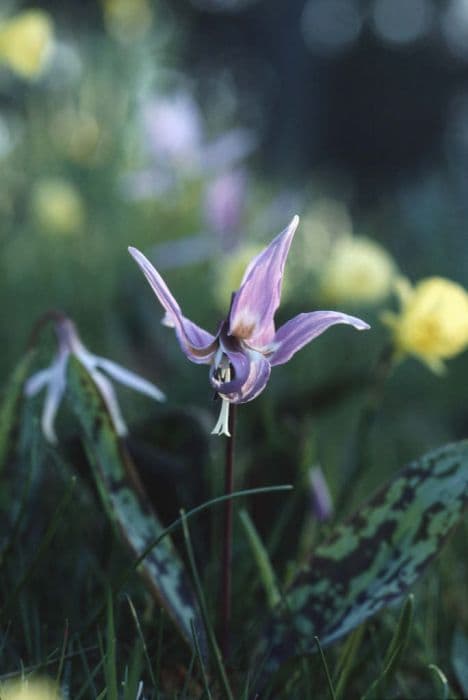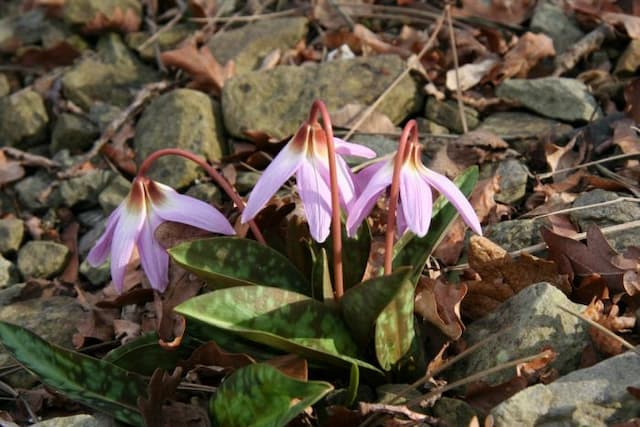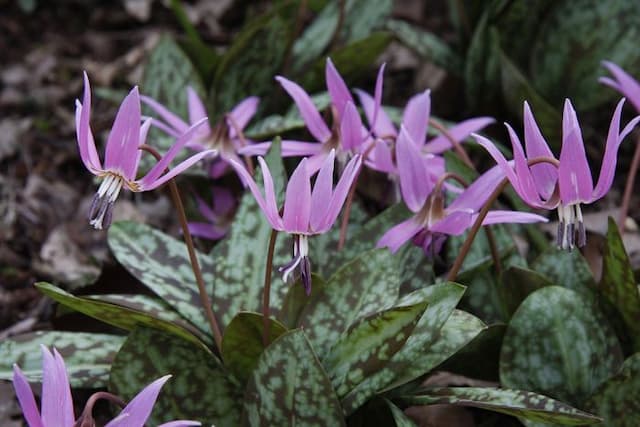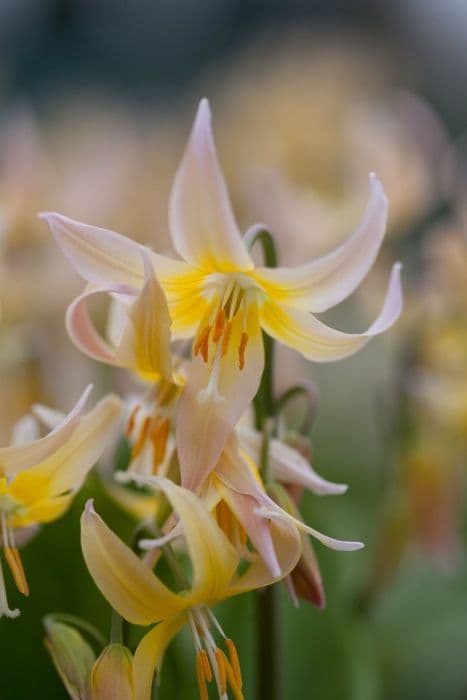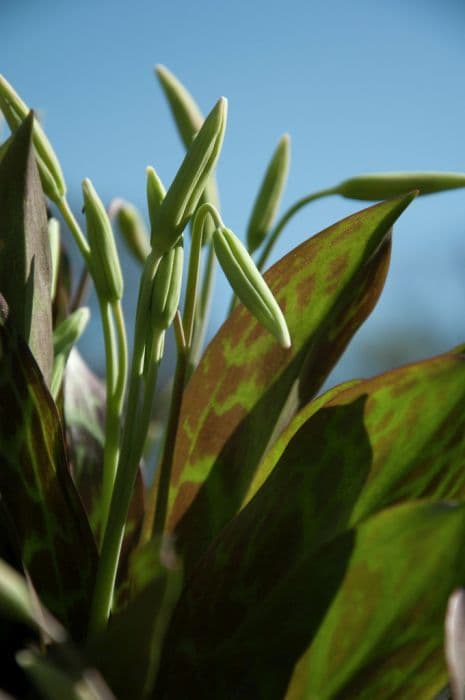Tulip Tulipa 'Blue Heron' (7)

ABOUT
Tulipa 'Blue Heron' is a striking variety of tulip known for its unique coloration and flower form. It features elegant blossoms that stand out with fringed edges, giving the petals a feathery appearance. The petals exhibit a rich, purplish-blue hue that can seem mesmerizing in a garden setting. This color is quite unusual for tulips, which makes 'Blue Heron' a prized choice for gardeners looking to add a touch of drama. The inner part of the petals may have a gradient of color that softens as it approaches the base, sometimes showing a lighter shade or even hints of another color that adds depth and complexity to the flower's appearance. The blooms are carried on sturdy stems that make them excellent for cut flower arrangements, where their unique texture and hue can be fully appreciated up close. The foliage is typically green, lance-shaped, and forms a complementary background for the vivid flowers. Overall, the 'Blue Heron' tulip is a showstopper with its fringed petals and striking color, offering a rare beauty among tulip varieties.
About this plant
 Names
NamesFamily
Liliaceae.
Synonyms
Tulip, Blue Heron Tulip.
Common names
Tulipa 'Blue Heron'
 Toxicity
ToxicityTo humans
The Tulip (Tulipa 'Blue Heron') can be toxic if ingested by humans. Tulips contain allergenic lactones and other alkaloids, primarily in the bulb. If parts of the plant, particularly the bulbs, are eaten, it can cause symptoms such as nausea, vomiting, diarrhea, and dizziness. Large quantities could potentially lead to more severe reactions such as difficulty breathing or an irregular heartbeat, but this is rare. Contact with the skin can also sometimes cause irritation or an allergic reaction.
To pets
Tulips, including the variety 'Blue Heron', are toxic to pets. The toxic principle of tulips is concentrated in the bulbs, so dogs or cats that dig up and eat the bulbs can suffer from symptoms of poisoning. These symptoms may include vomiting, diarrhea, depression, hypersalivation, and lack of appetite. In severe cases, ingestion could result in more significant medical issues such as an increased heart rate or changes in breathing. It is important to keep pets away from tulip bulbs and seek veterinary attention if you suspect your pet has ingested any part of the plant.
 Characteristics
CharacteristicsLife cycle
Perennials
Foliage type
Deciduous
Color of leaves
Green
Flower color
Purple
Height
1-2 feet (30-60 cm)
Spread
6 inches (15 cm)
Plant type
Bulb
Hardiness zones
3
Native area
Central Asia
Benefits
 General Benefits
General Benefits- Attractive Blooms: The Tulip 'Blue Heron' is known for its stunning purplish-blue flowers, which add a pop of color to gardens during their blooming season in spring.
- Landscaping: These tulips can be used to create beautiful landscape designs, particularly when planted in groups or contrasting with other spring-blooming flowers.
- Cut Flowers: The blooms of the 'Blue Heron' make excellent cut flowers for vases and floral arrangements due to their unique color and shape.
- Ease of Growth: Tulips are relatively easy to grow and maintain in the right climates, requiring minimal care once established.
- Symbolism: Tulips often symbolize love and are used in various events like weddings to convey this sentiment.
- Seasonal Interest: These tulips have a well-defined bloom time that signals the arrival of spring and provides a seasonal highlight in gardens.
- Perennial Growth: As perennials, these tulips will return year after year under the right growing conditions, offering long-term enjoyment.
 Medical Properties
Medical PropertiesThis plant is not used for medical purposes.
 Air-purifying Qualities
Air-purifying QualitiesThis plant is not specifically known for air purifying qualities.
 Other Uses
Other Uses- Tulip 'Blue Heron' petals can be used as a natural dye for fabrics or paper, providing a range of colors from pink to green depending on the mordant used.
- The sturdy stems of the plant can be used in floral crafts, such as making homemade wreaths or as structural elements in large floral arrangements.
- The bulbs can be ground into a paste for traditional adhesive or binder in certain artisanal crafts, though this is not a widespread practice.
- The unique color of the petals can be used in art projects, such as for creating botanical prints or pressed flower art, offering a distinctive blue hue.
- Petals of the Tulip 'Blue Heron' can be used as a coloring agent for artisanal soaps to provide a soft, natural coloration.
- The shape and structure of the flowers can inspire designs in industries such as fashion, where the silhouette can be replicated in textile patterns or jewelry.
- Dried Tulip 'Blue Heron' petals can be incorporated into homemade potpourri mixtures, contributing subtle color and texture to the blend.
- The flower can be utilized in photography as a subject for macro photography, showcasing the intricate details and colors of the bloom.
- The spent blooms can be added to compost bins where they break down and contribute to nutrient-rich soil amendments for gardening.
- In educational settings, the plant can be used to teach botanical illustration or as a specimen for biology students to learn about flower anatomy.
Interesting Facts
 Feng Shui
Feng ShuiThe tulip is not used in Feng Shui practice.
 Zodiac Sign Compitability
Zodiac Sign CompitabilityThe tulip is not used in astrology practice.
 Plant Symbolism
Plant Symbolism- Love and Passion: Tulips are often associated with deep love and passion, making them a popular choice for romantic occasions.
- Perfect Lover: In Persian folklore, red tulips are a declaration of love. 'Blue Heron' can evoke a sense of uniqueness in expressing love.
- Royalty: Some tulip varieties symbolize royalty due to their regal appearance. The 'Blue Heron', with its striking features, may carry a sense of elegance and nobility.
- Rebirth and Opportunity: Tulips are one of the first flowers to bloom in spring, symbolizing new beginnings and opportunities.
- Forgiveness: Tulips can also represent forgiveness, offering a way to apologize and make amends.
 Water
WaterThe Fringed Tulip 'Blue Heron' requires even moisture, particularly during the spring growing season. Water the bulbs deeply when the top inch of soil feels dry, which often works out to about once a week. Provide about a gallon of water per square foot every week during active growth. Adjust watering to account for rainfall, and reduce watering after the blooms have faded and the leaves begin to yellow, signaling the plant's entry into dormancy.
 Light
LightFringed Tulips like 'Blue Heron' thrive best in full sunlight to partial shade. Choose a planting spot that receives at least 6 hours of direct sunlight a day to ensure vigorous blooms. If you are in a particularly hot climate, some afternoon shade can help protect the flowers from intense heat.
 Temperature
TemperatureFringed Tulips such as 'Blue Heron' prefer cool spring conditions and are hardy in winter climates, surviving temperatures down to approximately 20 degrees Fahrenheit. They bloom best after a winter chill, making them suitable for locales with temperatures ranging from 20 to 70 degrees Fahrenheit during the growing season. Avoid planting in areas where temperatures frequently exceed 70 degrees Fahrenheit during bloom time.
 Pruning
PruningPruning Fringed Tulips, including 'Blue Heron', involves deadheading the spent blooms to maintain a tidy appearance and prevent seed formation, which can divert energy away from the bulb. However, leave the foliage in place until it has yellowed and died back naturally to allow the plant to store energy for the next season. Typically, this means pruning the flowers immediately after they fade but leaving foliage until it withers.
 Cleaning
CleaningAs needed
 Soil
SoilTulip 'Blue Heron' thrives in well-draining, fertile soil with a slightly acidic to neutral pH of 6.0 to 7.0. A good mix is equal parts loamy soil, compost, and sand to ensure proper drainage. Amend with organic matter to enhance fertility.
 Repotting
RepottingTulip 'Blue Heron' bulbs should be lifted and divided every 3-5 years to prevent overcrowding and to maintain plant vigor. Replant the bulbs in the fall before the ground freezes.
 Humidity & Misting
Humidity & MistingTulip 'Blue Heron' does not have specific humidity requirements and can tolerate the typical outdoor humidity in areas where it naturally thrives, as it is a hardy spring-flowering bulb.
 Suitable locations
Suitable locationsIndoor
Provide bright light, cool temps, and pot with drainage.
Outdoor
Plant bulbs in fall, full sun, well-draining soil.
Hardiness zone
3-8 USDA
 Life cycle
Life cycleThe life of the 'Blue Heron' tulip begins with the planting of the bulb in autumn, ideally a few inches deep into well-draining soil. After planting, the bulb undergoes a period of dormancy over the winter, requiring a cold period to stimulate the development of the flower. Come spring, the bulb breaks dormancy and starts to sprout, producing leaves and a stem that grows upward through the soil. The 'Blue Heron' tulip blooms in mid to late spring, showcasing its trademark ruffled, blue-purple petals that attract pollinators. After flowering, the plant begins the senescence phase: the petals wilt and drop, and the foliage dies back, redirecting energy back into the bulb. The cycle concludes with the bulb entering another period of dormancy, lying in wait to repeat the cycle the following year.
 Propogation
PropogationPropogation time
Spring
The most popular method of propagating the Tulipa 'Blue Heron', or simply the 'Blue Heron' tulip, is through bulb division. This is typically done in the fall after the leaves have died down and the plant is dormant. You should carefully dig up the bulbs and brush off any excess soil. Offsets, which are small bulbs that form at the base of the parent bulb, can be gently detached and planted separately. These offsets should be planted at a depth of about 6 to 8 inches (15 to 20 centimeters) in well-draining soil and spaced approximately 4 to 6 inches (10 to 15 centimeters) apart to allow for adequate growth and bloom in the following spring.
